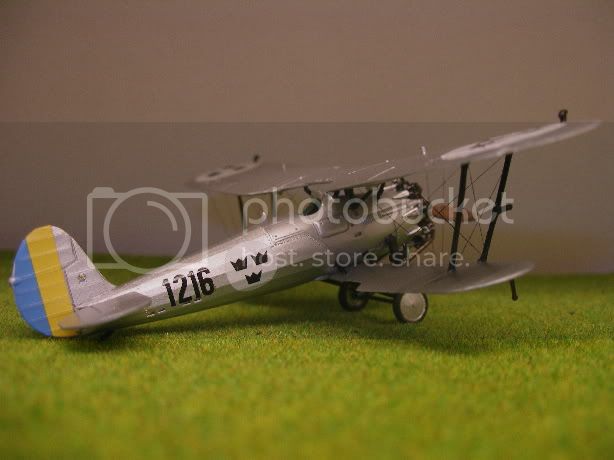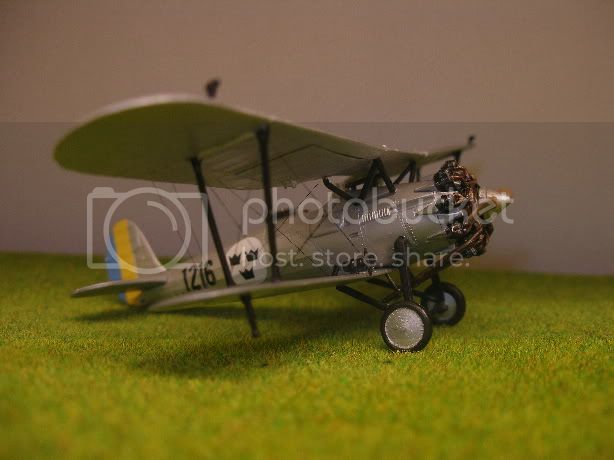I recently tried rigging a bi-plane for the first time. Since the method I used was quite fun and fast - and since it obviously could be applied by a newbie like me - I thought I'd share the basics.
The model I used was Airfix Bristol Bulldog Mk IIa in 1/72. It's a very cheap model (about € 6), and - in my humble opinion - well worth the money.

- Since Airfix didn't provide any drawings, I checked some photos of the actual aircraft. I tried to locate all the rigging, and started to plan how to drill the holes and how to draw the line. Preparation seems to be key.
- I drilled some tiny holes with the smallest drill bit I could find (made for Dremel but available seperately - I had to drill the holes by hand for precision and accuracy anyhow). I tried to place as many holes as possible in the struts (this was partly due to my late entry in the Two wings and a prayer campaign - I only had 48 hours, and I didn't have time to "repair" the wings from the drilling holes!).
Placement of the holes

- I used fly-fishing line, which was stretchable (and can thus be tightened without any major risk of snapping). 0.04 mm became almost invisible. 0.08 mm would probably be recommendable for 1/72.
- I used CA glue to attach one end to the "first" hole, waited for a minute or so, tested if it had cured sufficiently, and then it was a sinch to draw the line through the holes.
The main tools

- Once I reached the last hole, I applied a little bit of CA and then stretched the line. The rigging becomes really tight! I used the excess fishing line and swirled it a couple of times around the wings so that I would not have to hold the line while the CA cured.
- Finally, I cut of the excess line and made some finishing touches. A word of warning - As I tried to darken the lines with acrylic paint, tiny dropplets formed on the wires. Unfortunate, albeit hardly noticable for the naked eye (The model looks pretty big on the pictures, but it is really tiny!)
The finished result:


Believe me, rigging is well worth the try! Not that much work, and a rather impressive result!
Cheers!!























